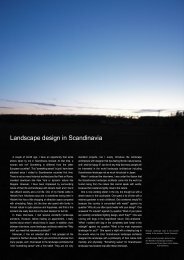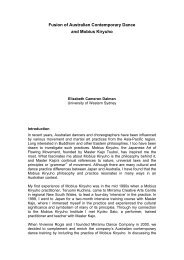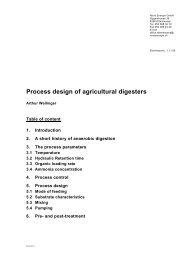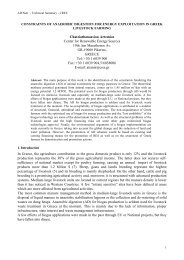III. No-Till Farming Systems - nifty
III. No-Till Farming Systems - nifty
III. No-Till Farming Systems - nifty
Create successful ePaper yourself
Turn your PDF publications into a flip-book with our unique Google optimized e-Paper software.
Foreword<br />
Welcome to a very unique book: A truly global collection of information<br />
presented by farmers, extension specialists, discipline professionals and<br />
research scientists. The World Association of Soil and Water Conservation<br />
(WASWC) had become aware of the range of no-till farming systems<br />
around the world, and realized the need to share this information as<br />
widely as possible.<br />
The practice of no-tillage crop production has flourished during the last<br />
few decades. It has now been adopted in some form in most countries.<br />
Such a ubiquitous phenomenon has few precedents in modern times. The<br />
evolution of no-tillage and its adoption rate have not been linear. Progress<br />
accelerated as the breakthroughs in science and new technologies gradually<br />
accumulated.<br />
The pioneers of no-till had a difficult time. Most were inquisitive farmers<br />
skilled in practical problem solving and mechanics, and motivated to continually<br />
initiate new avenues of exploration. They could see the rationale<br />
behind the practice and the potential benefits from its application. But<br />
equipment was limited and of inadequate design for the wide range of applications<br />
required. And their knowledge of the complex production ecology<br />
of no-till systems was very limited. However, their enthusiasm was<br />
infectious, and others increasingly joined in the quest to make no-till<br />
farming practical and profitable.<br />
The early practitioners and researchers were challenged by weed problems<br />
and fertility management. They soon came to realize that no-till practices<br />
create a moving target. The soil’s biological, physical, and chemical properties<br />
all change over time, as does the composition of weed populations.<br />
It takes time for the soil and plant system to reach a new equilibrium.<br />
Long-term research was therefore required to unravel the puzzle. However,<br />
research grants were most often short term; hence the initial results<br />
and recommendations did not always coincide with longer-term field experience.<br />
Research scientists had problems trying to represent field conditions<br />
on small plots. And no single no-till suite of recommendations fitted<br />
all areas, so farmers had to conduct localized field trials to see what<br />
worked best in their region and for their particular cropping systems.<br />
xi














